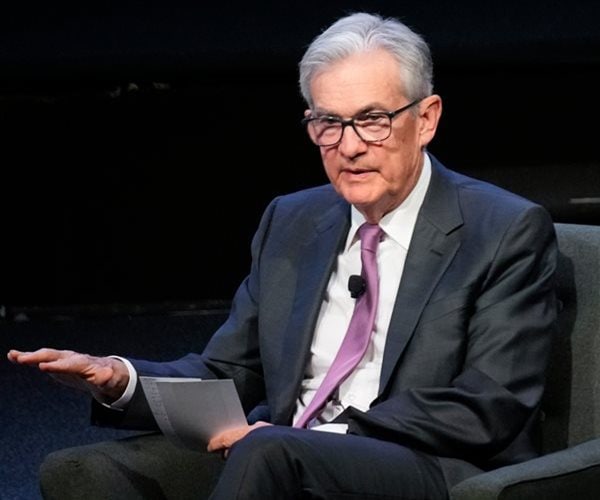The Federal Reserve is poised to depart its key rate of interest unchanged on Wednesday, at a time when it faces an financial system that has confirmed resilient however is nonetheless beneath stress from rising rates of interest, unrest overseas and frightened buyers.
US financial development rose within the July-September quarter on sturdy client spending, and inflation confirmed indicators of uncomfortably excessive ranges final month. Chairman Jerome Powell will need to make sure that the financial system is cooling and inflation is falling once more earlier than he alerts the Fed’s push to scale back inflation to its 2% goal stage.
On the identical time, turbulent monetary markets have pushed up longer-term U.S. Treasury yields, inflicting inventory costs to fall and company borrowing prices to rise. Powell and different Fed policymakers have mentioned they consider these tendencies may contribute to an financial slowdown — thereby easing inflationary pressures — with out the necessity for additional charge hikes.
Since March 2022, the Fed has raised its coverage charge from close to zero to round 5.4% because it tries to curb inflation, which hit its highest stage in 4 many years because the financial system emerged from the pandemic recession in 2020. loans and bank card debt have all elevated in response. Annual inflation, measured by the federal government’s client worth index, has fallen to three.7% from a peak of 9.1% in June final 12 months.
Wall Road economists have estimated that sharp losses within the inventory and bond markets in latest months may have a depressive impact on the financial system equal to the affect of three or 4 quarter-point charge hikes by the Fed.
“It is clearly a tightening of monetary circumstances,” Powell mentioned this month. “That is precisely what we’re making an attempt to attain.”
Though the Fed has raised rates of interest to a 22-year excessive, it has not imposed any will increase since July. But the yield – or rate of interest – on 10-year authorities bonds has continued to rise, reaching 5% final week, a stage it hasn’t reached in 16 years. The rise in Treasury yields has pushed the typical 30-year mortgage charge to almost 8% and has additionally pushed up the prices of bank cards, auto loans and plenty of types of enterprise loans.
Market analysts say a variety of things have mixed to push up authorities bond yields. For starters, the federal government is anticipated to promote probably trillions of {dollars} extra in bonds within the coming years to finance large and chronic finances deficits, even because the Fed shrinks its bond holdings. In consequence, greater rates of interest on authorities bonds could also be crucial to draw extra consumers.
And with the long run path of rates of interest murkier than regular, buyers are demanding greater returns in change for the better threat of holding longer-dated bonds.
What’s necessary for the Fed is that 10-year Treasury yields have continued to rise even with out central financial institution charge hikes. That implies that Treasury yields may stay unusually excessive even when the Fed leaves its personal charge unchanged. In flip, rates of interest on many enterprise and client loans may additionally stay excessive, protecting financial development and inflation in examine.
In accordance with the CME FedWatch Device, Wall Road merchants anticipate a 98% likelihood that the Fed will depart charges unchanged on Wednesday. And so they challenge solely a 24% probability of a charge hike on the subsequent Fed assembly in December.
Powell and different policymakers hope to proceed making progress towards a so-called mushy touchdown, wherein they might handle to gradual inflation to 2% with out triggering a deep recession.
Inflation has fallen from its all-time highs at the same time as employment has remained sturdy, customers are spending freely and the financial system is rising at a sturdy tempo, elevating expectations amongst many economists {that a} recession would possible be essential to make a lot progress. be baffled.
“The story of the 12 months to date,” Goldman Sachs economists wrote, “is that financial reacceleration has not prevented additional progress in combating inflation.”
But the overturning of those conventional relationships has additionally posed a problem for Fed policymakers. They’re now shifting ahead with out a lot steering from their financial workhorse mannequin often called the Phillips Curve. Below that financial mannequin, overcoming inflation usually requires a lot greater unemployment and slower development – even a recession.
Alan Blinder, a Princeton College economist who served as Fed vice chairman from 1994 to 1996, mentioned final week that these relationships have been disrupted by COVID-19 and that the Fed has much less clear tips for setting coverage.
“The pandemic has modified every thing,” he mentioned.
On the Fed within the Nineteen Nineties, Blinder mentioned that “we used to depend on the Phillips Curve when assessing inflation tendencies.” “That is an enormous distinction between then and now.”
Blinder spoke to The Related Press in Washington simply earlier than he acquired an award from the American Academy of Political and Social Science for lifetime service.
Copyright 2023 The Related Press. All rights reserved. This materials is probably not printed, broadcast, rewritten or redistributed with out permission.

